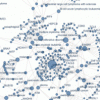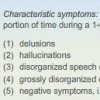New approach to Alzheimer’s diagnosis
 Alzheimer’s disease is a debilitating, ultimately fatal neurological disorder which affects more than 5 million Americans. The disease has no cure, but the recent decade has seen many promising treatments which all depend upon diagnosing Alzheimer’s as early as possible.
Alzheimer’s disease is a debilitating, ultimately fatal neurological disorder which affects more than 5 million Americans. The disease has no cure, but the recent decade has seen many promising treatments which all depend upon diagnosing Alzheimer’s as early as possible.
Typically, Alzheimer’s is diagnosed through cognitive testing. Family members or health care professionals may realize that a person is experiencing forgetfulness, disorientation, or other symptoms. Unfortunately, by the time these symptoms are apparent and a diagnosis is made, the patient may have already experience a great deal of brain damage.
A new method to test for Alzheimer’s at a much earlier stage of the disease has been described in a paper in the journal Neurobiology of Aging, (10.1016/j.neurobiolaging.2010.04.025) where Laurel Beckett et.al. describe a method of diagnosis based on a combination of imaging and sampling of cerebrospinal fluids to categorize individuals into at-risk groups before clinical signs of Alzheimer’s appear.
This important work could have a two-fold impact on the fight against Alzheimer’s. By identifying at-risk patients early, medical intervention may be able to at least delay the onset of the disease. The early identification of at-risk individual also would accelerate the development of clinical interventions because you have now isolated a population that can participate in clinical investigation and broaden the horizon of time investigators have to work with, increasing the rate at which further discovery can proceed.
| Print article | This entry was posted by admin on July 13, 2010 at 10:41 am, and is filed under G2C Online. Follow any responses to this post through RSS 2.0. You can skip to the end and leave a response. Pinging is currently not allowed. |


